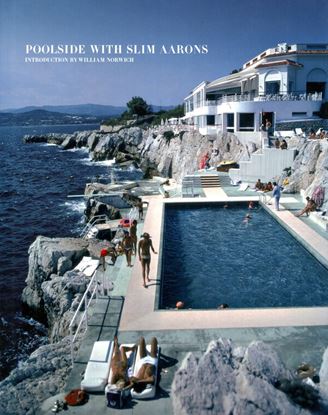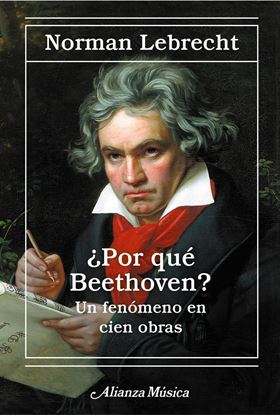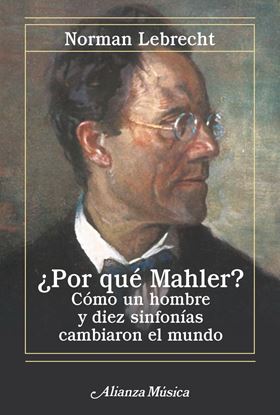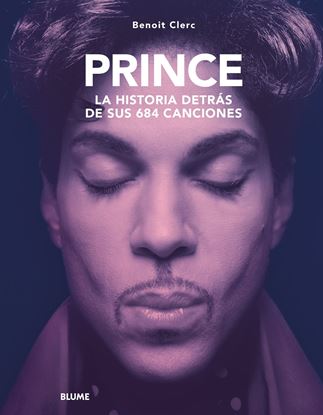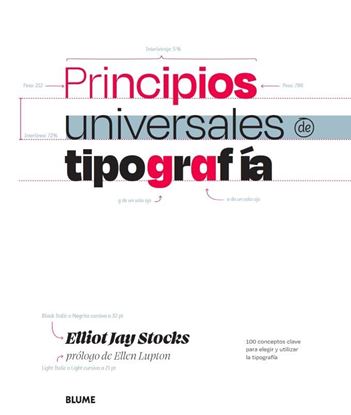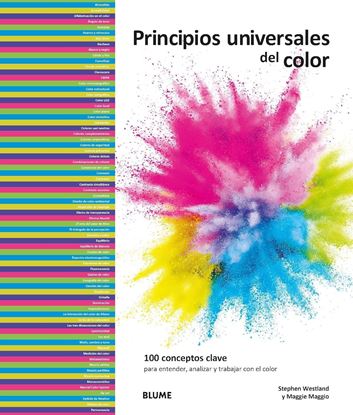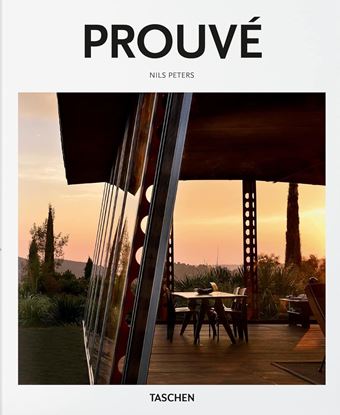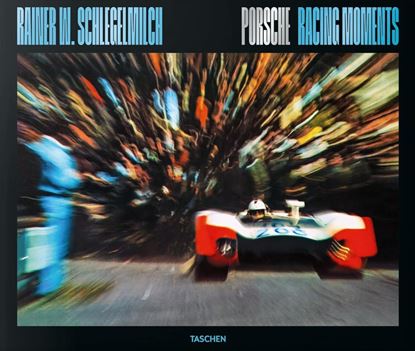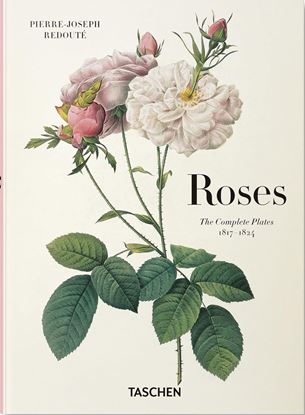

POOLSIDE WITH SLIM AARONS
Poolside with Slim Aarons offers images of jet-setters and the wealthy, of beautiful, glittering people living the glamorous life. Yet this collection of stunning photographs of the rich and well-connected “doing attractive things” in their favorite playgrounds has a twist: The main character is pools, and everything that goes with them.
Pools bring with them images of magnificent, suntanned bodies; well-oiled skin; bikini-clad women; yachts; summer cocktails; sumptuous buffets; spectacular locations; and most of all: fun.
Poolside is not so much a who’s who of society, aristocracy, and celebrity—although C. Z. Guest, Lilly Pulitzer, Cheryl Tiegs, Peter Beard, and many who have appeared in Slim's previous books are here—as it is about leisure time and how the rich make use of it. This is a more intimate peek into very private lives, to which photographer Slim Aarons was given unprecedented access in the fifties, sixties, seventies, and eighties.
This coffee table book is perfect for sharing, displaying, and gifting.
6,500
5,200
POR QUE BEETHOVEN?
Si Beethoven nunca hubiese existido, habitaríamos un universo musical radicalmente distinto. Pero ¿quién era realmente este titán de la cultura mundial?
A través de un centenar de breves capítulos, cada uno dedicado a alguna de sus obras clave, Norman Lebrecht traza un retrato poliédrico que nos muestra al compositor como nunca lo habíamos visto. Ingobernable, ofensivo y desesperado durante la mayor parte de su vida, sí; pero también sensible y completamente entregado a su arte, capaz de sobreponerse a la sordera para componer algunas de las obras cumbre de nuestra cultura. Por el camino, nos encontramos con los grandes músicos que a lo largo de la historia han asumido el reto que Beethoven legó a la posteridad, en todas sus glorias y debilidades. En el centro del mosaico que dibuja esta biografía reveladora y única, Beethoven emerge como piedra angular del mundo moderno.
1,500
1,200
POR QUE MAHLER?
Más de un siglo después de su muerte, Gustav Mahler es el compositor más importante de los tiempos modernos. ¿Por qué Mahler? ¿Por qué su música nos afecta tanto? ¿Por qué un músico judío «tres veces apátrida» expresa tan cabalmente las añoranzas y ansiedades de nuestra sociedad postindustrial?
Después de situar la relevancia actual de Mahler, Norman Lebrecht presenta un apasionante relato de su vida y su tiempo y, por último, ofrece al lector una guía segura que le orienta entre las numerosas interpretaciones de Mahler. Ameno y cargado de erudición, biografía y narración de un viaje al mismo tiempo, el presente libro es una exploración del papel que la música de Mahler desempeña como banda sonora de nuestro mundo.
1,500
1,200
PRINCE. LA HISTORIA DETRAS DE SUS 684 C.
Después de dos álbumes teñidos de funk y disco, Prince Rogers Nelson se convirtió en el maestro del Minneapolis Sound en 1980 con su tercer álbum, el sulfuroso y acertadamente llamado Dirty Mind.
Desde sus primeros discos para Warner Bros. Records, el hombre que pronto sería apodado el Kid de Minneapolis dedicó su vida a una abundante y variada producción musical.
Prince atravesó la década de 1980 con una irreverencia y audacia que lo caracterizarían. Después de encadenar varios éxitos (Little Red Corvette, Purple Rain, Kiss, Sign O' The Times o Batdance) y más de 100 millones de discos vendidos, Prince supo reinventarse con cada uno de sus discos, burlando las predicciones de quienes lo creían muerto, resurgiendo constantemente de las cenizas, y siempre sorprendiendo a través de nuevas direcciones artísticas.
De Madonna a Miles Davis, de Michael Jackson a Kate Bush, todos los grandes nombres de la música popular quisieron grabar con él. Tras la inesperada muerte del cantautor en 2016, The Prince Estate ha trabajado para exhumar de The Vault, su bóveda acorazada de Paisley Park (su casa-estudio), álbumes preciosos hasta ahora inéditos. Miles de canciones aún reposan allí; cada lanzamiento es un evento global.
3,995
3,196
PRINCIPIOS UNIVERSALES DE TIPOGRAFIA
* 100 conceptos, teorías y reglas clave para elegir, combinar y utilizar la tipografía: un libro que lo equipará con todo lo que necesita para tomar las decisiones tipográficas más informadas en sus trabajos de diseño, sea cual sea el medio. * Profusamente ilustrado y de fácil comprensión, con explicaciones claras combinadas con ejemplos visuales, principios comprobados a lo largo de cientos de años de composición tipográfica y los últimos avances en tecnología de navegadores, fuentes web y fuentes variables. * El arte y la ciencia de la tipografía combinan ajustes sutiles en la longitud de las líneas con mezclas armoniosas de pesos y estilos, emparejamientos de tipografías seleccionados con esmero junto a un conjunto sólido de caracteres alternativos, y avances tecnológicos emocionantes con las realidades de las licencias tipográficas. Existen innumerables maneras en las que los diseñadores pueden mejorar la legibilidad de un texto e influir en cómo se entiende su mensaje; sin embargo, muchos diseñadores comunican mal sin siquiera darse cuenta. Información completa y autorizada junto a ejemplos didácticos e inspiradores en temas multidisciplinares para diseñadores, arquitectos, ingenieros, estudiantes y cualquiera que esté interesado en ampliar y enriquecer sus conocimientos en diseño.
2,350
1,880
PRINCIPIOS UNIVERSALES DEL COLOR
* Descubra 100 conceptos clave y pautas interdisciplinarias imprescindibles para utilizar el color con éxito. * Profusamente ilustrado y de fácil consulta, vincula explicaciones claras de cada tema y ejemplos visuales aplicados a la teoría y la práctica. * Ya sea en una campaña de branding, un centro sanitario, el embalaje de un producto o la interfaz de una aplicación informática, el color que vemos es la materialización de un gran número de conceptos y prácticas que se unen desde múltiples disciplinas para aumentar el atractivo, influir en la percepción y mejorar la comodidad de uso. Incluye conceptos y ejemplos, con los que podrá aprender a tomar decisiones de color más cimentadas y eficaces. Un punto de referencia fundamental para diseñadores, artistas, arquitectos y estudiantes que deseen ampliar y mejorar su conocimiento y experiencia del color.
2,250
1,800
PROUVE (BASIC ART EDITION)
French-born Jean Prouvé (1901–1984) was the 20th century’s leading construction designer, a self-declared constructeur and member of the jury who oversaw the design of the Centre Pompidou in Paris. As a designer, he captured the midcentury spirit of innovation, expansion, and growth, developing techniques that united simple, striking aesthetics with practical, cost-effective materials and assembly.From vast, temporary exhibition marquees to handheld letter openers, modular building systems to interior lighting, Prouvé’s designs efficiently fitted their function with minimal fuss and understated elegance. Feted by designers, architects, and engineers the world over, Prouvé has left a rich and inspirational legacy, which resonates perfectly with the approach of this compact volume, neatly summarizing his life and works.
1,350
1,080
RAINER W. SCHLEGELMILCH. PORSCHE RACING
In 1962, Rainer W. Schlegelmilch had his first experience of motorsport – the 1,000 km at the Nürburgring – and it was this that sparked a lifelong passion for both Porsche and racing that still burns today.
Beginning in 1963, this wholly captivating collection of breathtaking shots transports you to another time and another world, taking you on a journey through the history of Porsche endurance racing, from Le Mans to Monza, via the Targa Florio and Spa-Francorchamps. And with his own words accompanying the pictures, Schlegelmilch shows and tells fascinating stories from track and trackside.
9,500
7,600


